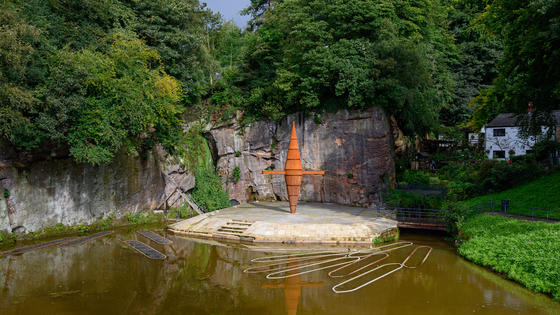As part of the work to restore Worsley Delph a series of specially-crafted sculptural features have been installed to help reveal the site's rich and multi-layered heritage.
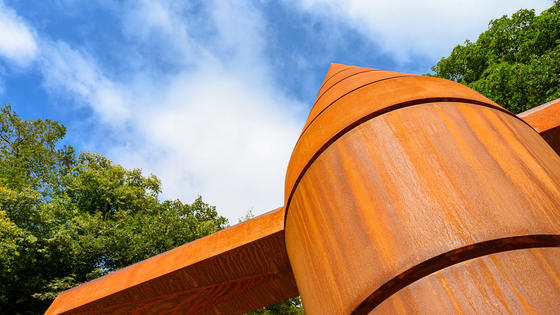
Perhaps the most striking of the new art works is the towering steel structure that now stands tall on the island area of the Delph. It's certainly aroused a lot of interest and comment. It is, in fact. a contemporary reimagining of something that was once there – something that was described by Arthur Young back in 1770 as ‘a crane of curious construction, used for heaving the stones out of the quarry into the barges’. Intriguingly we aren’t exactly sure how it worked and can only try to imagine this giant machine in operation – it must have been quite a sight. This modern version has been made from a stunning orange coloured steel (called corten) – a perfect echo of the Bridgewater Canal’s infamously unusual colour.
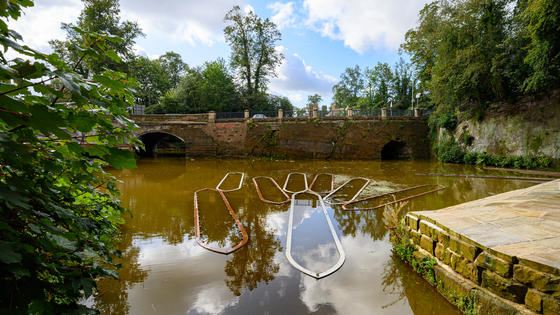
Worsley Delph is the start of 46 miles of tunnels that lead to a network of underground mines. Nestling up against the openings to these tunnels are the outlines of mining boats that would have gone in and out, first empty and then full of the coal they collected. They give a hint at what it would have looked like over a quarter of a century ago as day to day life was carried out in the Delph.
As you look at the curious crane and the boats from the new viewing platform, you are able to see and touch various pieces of history brought back to life in bronze.
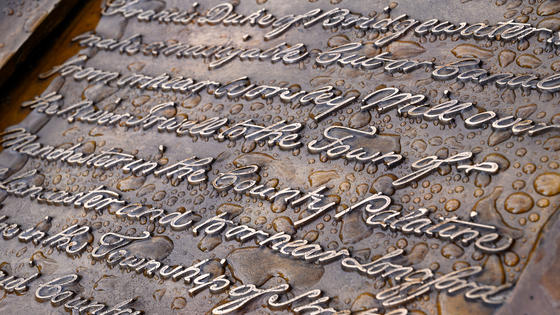
The first piece you come to is a reproduction of the Act of Parliament 1659 that set the whole canal system in motion. The scroll has been faithfully created from the original Act which was pulled out of the archive at the Houses of Parliament and digitally remastered by the artist. Underneath this folio is a map of the underground canal system – the branches of which are echoed in the steps that take you down into the rest of the viewing platform.
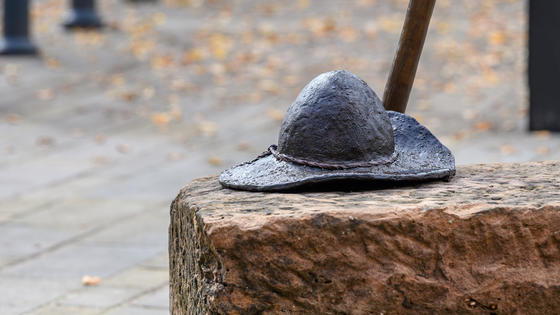
You can also see examples of miners’ hats from throughout the ages including one from the 18th century and another more recent one from the 1960s. Alongside them, sit a pickaxe and a shovel, tools that would have been hard at work during the mines’ heyday.
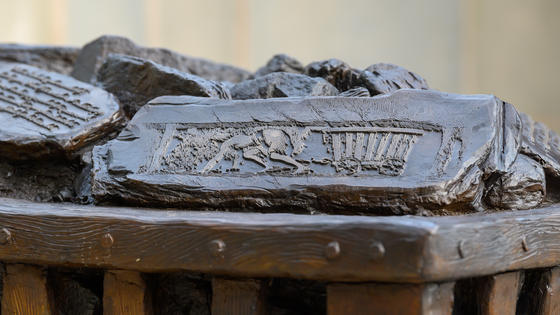
A replica coal cart, complete with harness; usually pulled by women known as ‘drawers’– is definitely worth a second look. If you study the individual pieces of coal you will find they are intricately etched with details telling stories of what it was like to be a young child in the mines prior to the Mines Act of 1842 which finally stopped children under 10 years old from working there.
.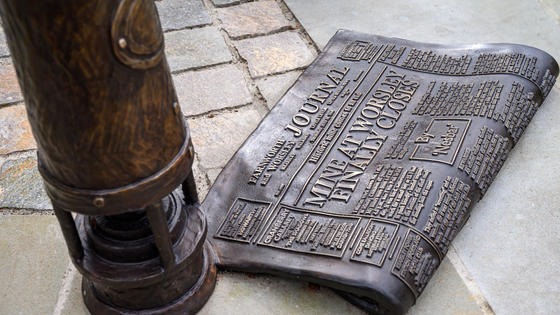
A miner’s lamp, still manufactured today in Eccles, illuminates a newspaper front page. In the interests of artistic license the main headline announcing the mines closure is imagined but the rest of the page, including the advertisements, are all as they would have been in the The Farnworth and Worsley Journal on 18 July 1968.
All artworks were designed by Bronzecast who also made the bronze pieces.
